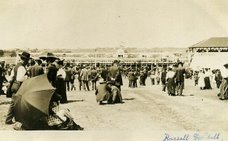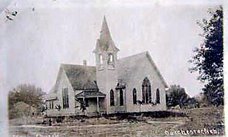 Most area historians agree that "Andreas' History of the State of Nebraska" -- written in the late 1800s -- is an authority on Saline County's earliest days. No other collection of information is as detailed or thorough.
Most area historians agree that "Andreas' History of the State of Nebraska" -- written in the late 1800s -- is an authority on Saline County's earliest days. No other collection of information is as detailed or thorough.Through the online edition of "Andreas' History," the Times today is sharing Andreas' description of early Dorchester.
Here is a look back at how the experts described our community, whose roots begin in the year 1870 when Dorchester's location was selected by the Burlington and Missouri River Railroad:
DORCHESTER
 This situation is an attractive one, being on the level prairie land about midway between the West Blue River and Turkey Creek. The first named stream is three miles north, and the latter about the same distance south from the town.
This situation is an attractive one, being on the level prairie land about midway between the West Blue River and Turkey Creek. The first named stream is three miles north, and the latter about the same distance south from the town.It is in the center of a rich agricultural region, and supported by a thriving and industrious class of farmers, who are settled on all sides of the village.
The population now numbers about 300, and is made up of a substantial and progressive class of citizens, who are moral and industrious.
The business and professional interests of the town are represented by three general merchandise stores, two drug, one grocery, one furniture, two hardware, and two millinery stores, one bank, two restaurants, two hotels, three livery stables, a post office, one newspaper office, two elevators, two lumber yards, two coal yards, two blacksmith shops, two lawyers and four physicians.
There are three substantial churches.
The residence portion of the village is made up of neat houses of different styles of architecture, but none of them very large. The schoolhouse is a good one.


















































No comments:
Post a Comment
Village Dweller checks all reader comments to determine if they are appropriate for print.